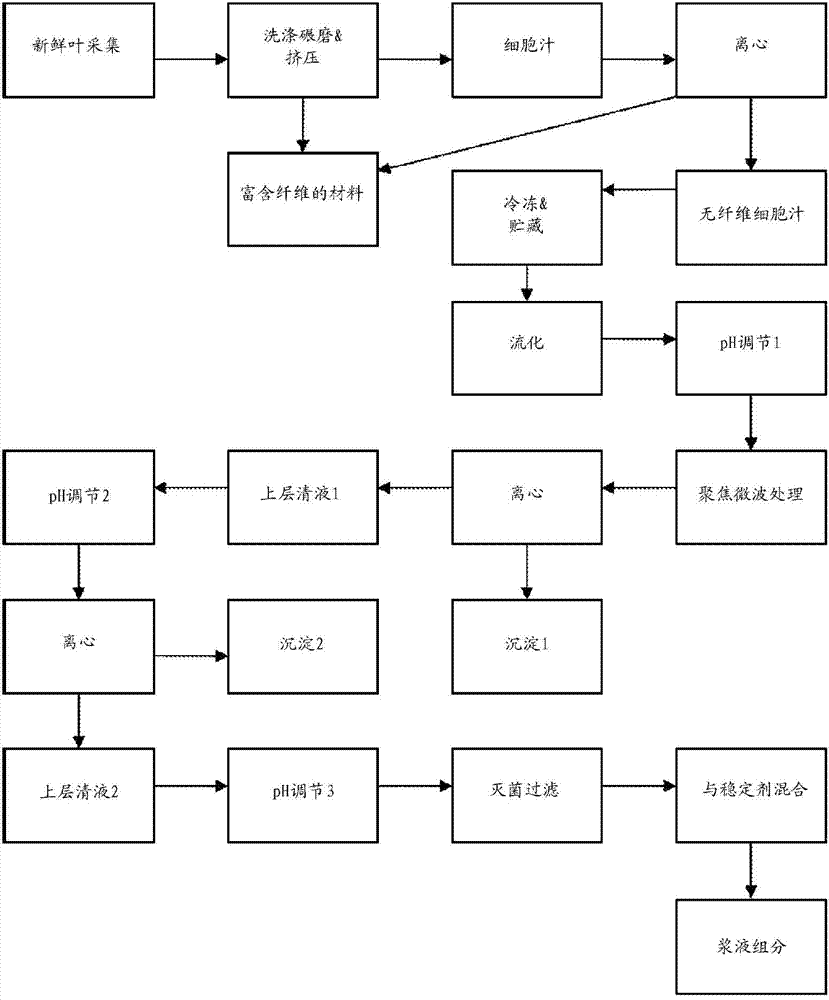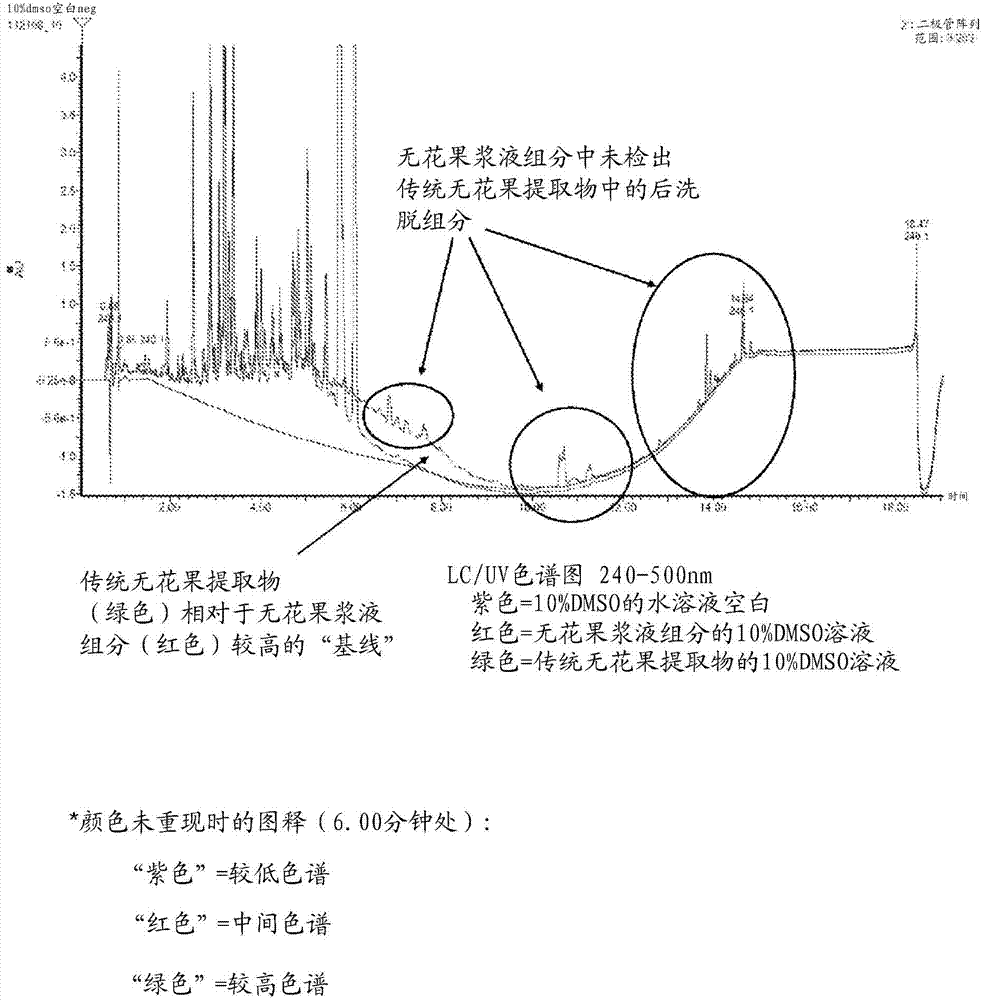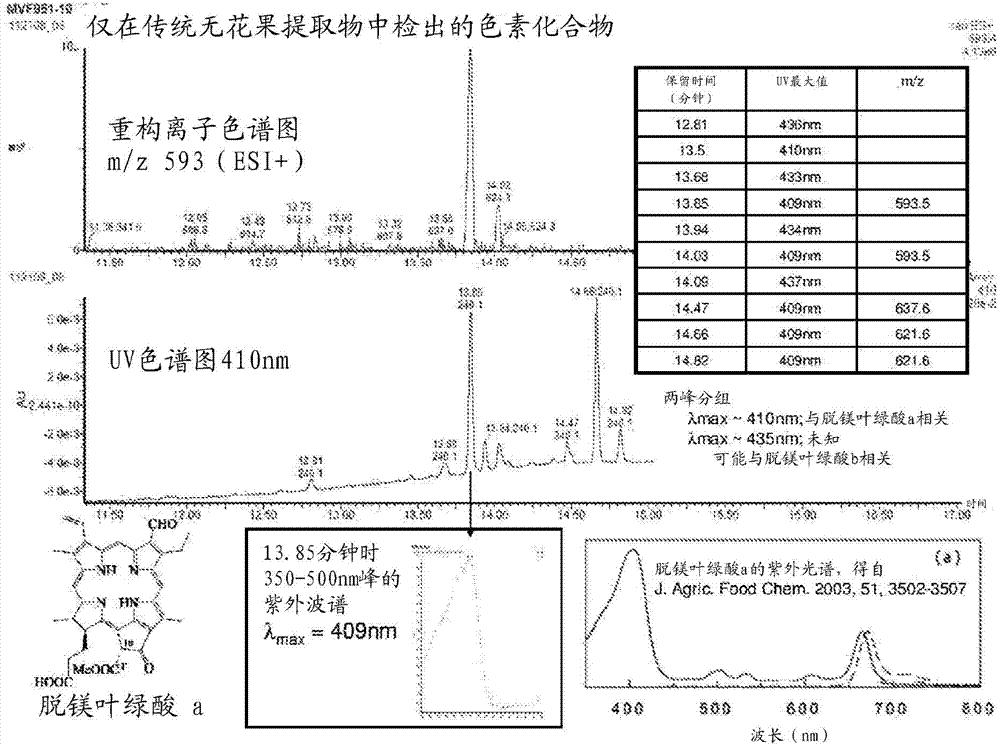Cosmetic compositions comprising ficus serum fraction and methods to reduce the appearance of skin hyperpigmentation
A cosmetic composition, fig technology, applied in the field of reducing the appearance of skin hyperpigmentation, topical skin lightening composition, can solve the problems of environmental hazards, inability to present the full picture of active substances, toxic chemical waste, etc.
- Summary
- Abstract
- Description
- Claims
- Application Information
AI Technical Summary
Problems solved by technology
Method used
Image
Examples
preparation example Construction
[0048] Preparation of Fig Serum Fraction
[0049] The method used to isolate compounds from plant material, eg, by extraction with a solvent, determines which compounds are isolated. Consistent with the general principle of "like dissolves like", the choice of extraction solvent essentially determines the type and amount of compounds obtained by any particular extraction technique. For example, polar compounds are extracted by using polar solvents, and non-polar compounds are extracted by using non-polar solvents. This allows for the isolation of only a small range of compounds that may be present. The correlation between solvent polarity and the type of species isolated using conventional solvent extraction is depicted in the diagram below (Houghton & Raman, Laboratory Handbook for the Fractionation of Natural Extracts (1998)).
[0050]
[0051] The fig serum fraction of the present invention is not prepared by solvent extraction, but by separating the fresh cell juice...
example 5
[0091] Proteins, including those in plants such as figs, can cause contact dermatitis in allergic individuals. Shortly after exposure to the pathogenic proteinaceous material, such individuals may experience symptoms such as acute urticaria or a vesicular eruption of the skin, often with itching, burning, and / or stinging. (V. Janssens et al., "Protein contact dermatitis: myth or reality?", British Journal of Dermatology, 1995; 132:1-6) It is therefore highly desirable that skin care substances contain as little protein as possible.
[0092] The total protein content of FSF was determined by the Kjeldahl method (Example 1, Table 3). No protein was detected in FSF. As used herein, "essentially protein-free" means less than 1% (0% to 1%) total protein as determined by the Kjeldahl method. In some embodiments, the protein content of FSF is 0% to 1%, in other embodiments 0% to 0.5%, and in other embodiments 0% to 0.25%.
[0093] Chromaticity / Chromaticity Stability
[0094] ...
example 1
[0181] Preparation of Bioactive Serum Fractions Derived from Fresh Ficus Bengal Leaves .
[0182] figure 1 As a schematic, one example of a method of preparing a bioactive serum fraction from fresh fig leaves is shown.
[0183] Collect enough fresh Ficus bengal leaves to obtain about 100 kg dry matter. The dry matter content in the fresh leaves was measured to be 32.01%, and about 312.4 kg of fresh plant leaves need to be harvested to obtain 100 kg of dry matter. Care is taken to maintain the inherent moisture content in fresh leaves and to avoid wilting due to moisture loss. Collection is carried out in such a way as to avoid or minimize any damage to the collected fresh leaves. All steps are performed in the shortest possible period of time to minimize exposure of the fresh leaves to sunlight, heat, and other adverse environmental factors.
[0184] Then within ≤5 minutes and ≤1kg / cm 2The collected leaves are washed under water pressure to remove dirt particles and ot...
PUM
 Login to View More
Login to View More Abstract
Description
Claims
Application Information
 Login to View More
Login to View More - R&D
- Intellectual Property
- Life Sciences
- Materials
- Tech Scout
- Unparalleled Data Quality
- Higher Quality Content
- 60% Fewer Hallucinations
Browse by: Latest US Patents, China's latest patents, Technical Efficacy Thesaurus, Application Domain, Technology Topic, Popular Technical Reports.
© 2025 PatSnap. All rights reserved.Legal|Privacy policy|Modern Slavery Act Transparency Statement|Sitemap|About US| Contact US: help@patsnap.com



